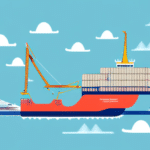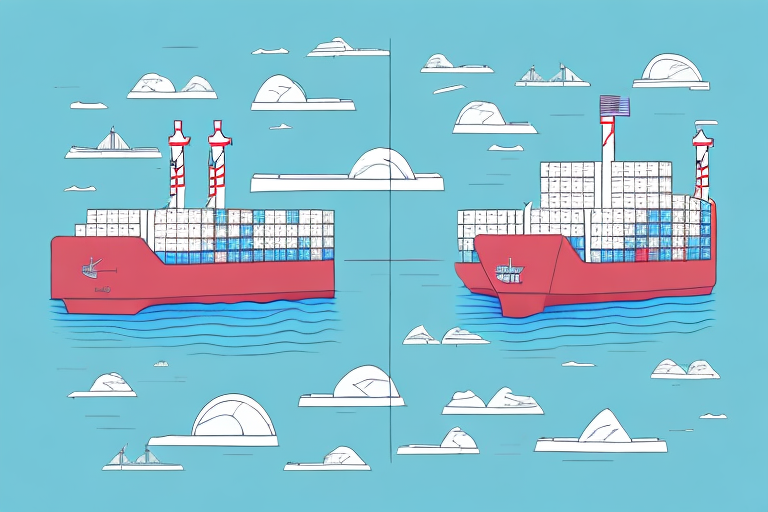Understanding FedEx Freight Transit Times
Shipping your goods can be a daunting task, especially when considering the time it will take for them to arrive at their destination. In the world of logistics, transit time refers to the number of days it takes for a shipment to travel from the point of origin to the final destination. FedEx is one of the major players in the logistics industry, responsible for millions of packages every day. As a shipper, understanding FedEx freight transit times is crucial to ensure that your packages arrive on time and within budget.
How FedEx Determines Freight Transit Times
When determining the transit time for a shipment, FedEx considers several factors:
- Distance: The distance between the point of origin and the final destination is a primary factor.
- Package Specifications: Weight, dimensions, and the nature of the contents influence transit times.
- Service Level: Different service levels (e.g., overnight, two-day, ground) offer varying transit times.
- Mode of Transportation: Options include air, ground, and ocean freight, each with its own speed and cost implications.
- Potential Delays: Weather conditions, customs clearance for international shipments, and operational issues can impact transit times.
By analyzing these factors, FedEx provides estimated transit times to help shippers plan accordingly.
The Importance of Accurate Freight Transit Times
Accurate freight transit times are essential for shippers for several reasons:
Operational Efficiency
With precise transit times, businesses can optimize their supply chain operations, ensuring timely inventory replenishment and reducing storage costs. For example, accurate estimates allow for better scheduling of production and distribution activities.
Cost Management
Understanding transit times helps in budgeting shipping costs. Expedited shipping options may be more expensive but necessary for time-sensitive deliveries. Accurate planning prevents unexpected costs due to delays.
Customer Satisfaction
Reliable transit times enhance customer trust and satisfaction. Customers appreciate transparency and predictability, which can lead to repeat business and positive reviews.
Factors Affecting FedEx Freight Transit Times
Type of Shipment
The nature of the shipment significantly impacts transit times. Expedited shipments arrive faster but at a higher cost, while standard shipments are more economical but take longer.
Distance Between Origin and Destination
Longer distances generally require additional time, sometimes involving multiple modes of transportation. For instance, international shipments may necessitate air and ground transport, extending the overall transit time.
Seasonal Variations and Peak Periods
During peak shipping seasons like holidays or events like Black Friday, increased volume can lead to longer transit times due to higher demand and potential delays.
Customs and Regulatory Clearance
For international shipments, customs procedures can introduce delays. Proper documentation and compliance with regulations are crucial to minimizing these delays.
Calculating and Tracking FedEx Freight Transit Times
Using FedEx Transit Time Calculator
FedEx offers an online Transit Time Calculator that allows shippers to estimate delivery times based on origin, destination, package details, and selected service level.
Real-Time Shipment Tracking
FedEx provides real-time tracking through their website and mobile app. Shippers can monitor their shipments' progress, receive updates, and be alerted to any potential delays.
Working with Third-Party Logistics Providers
Collaborating with third-party logistics (3PL) providers can offer additional insights and tools for calculating and managing transit times, leveraging their expertise and technology.
Comparing FedEx Freight Transit Times to Other Carriers
Service Level Comparisons
When comparing FedEx to other carriers like UPS or DHL, it's essential to evaluate the specific service levels offered. For example, FedEx's Priority Overnight service may have comparable transit times to UPS's Next Day Air, but pricing and reliability can vary.
Reliability and Consistency
FedEx is renowned for its reliability, but carriers differ in handling delays and maintaining consistent transit times. Reviewing independent performance metrics and customer reviews can provide a clearer comparison.
Cost vs. Transit Time
Typically, faster transit times come at a higher cost. Shippers must balance the urgency of deliveries with budget constraints to choose the most appropriate carrier and service level.
Strategies for Managing and Optimizing Transit Times
Effective Communication
Transparent communication with customers about expected transit times and potential delays fosters trust and manages expectations effectively.
Leveraging Technology
Utilizing advanced tracking systems and logistics software can enhance visibility and enable proactive management of shipments.
Optimizing Packaging and Preparation
Proper packaging ensures shipments are secure and less likely to encounter damage or delays. Accurate labeling and documentation expedite processing and customs clearance.
Partnering with Reliable Carriers
Building strong relationships with dependable carriers like FedEx ensures better handling of shipments and more favorable transit times.
Navigating Delays and Mitigating Issues
Contingency Planning
Having backup plans for unexpected delays, such as alternative transportation options or expedited services, can minimize disruptions.
Analyzing Delay Patterns
Reviewing historical data on delays can help identify common issues and implement measures to prevent recurrence.
Customer Notifications
Proactively informing customers about delays and providing updated delivery estimates maintains transparency and customer satisfaction.
The Role of Technology in Improving Transit Times
Advanced Tracking Systems
Real-time tracking technologies offer enhanced visibility into shipment locations and statuses, allowing for timely interventions if needed.
Automation and AI
Automation in sorting and routing, combined with artificial intelligence for predictive analytics, can streamline operations and reduce transit times.
Internet of Things (IoT)
IoT devices can monitor shipment conditions and provide data that helps optimize routes and prevent delays due to environmental factors.
Tips for Optimizing Your Shipping Strategy to Minimize Transit Times
- Select the Appropriate Service Level: Choose a service that aligns with your delivery urgency and budget.
- Consolidate Shipments: Grouping multiple shipments can reduce transit times and costs.
- Ensure Accurate Documentation: Proper paperwork facilitates smooth customs clearance and reduces delays.
- Utilize FedEx Tools: Take advantage of FedEx's shipping tools and resources to plan and optimize your shipments effectively.
- Maintain Good Packaging Practices: Secure and properly sized packaging minimizes the risk of damage and delays.
Common Misconceptions About FedEx Freight Transit Times
Transit Times are Guaranteed
While some FedEx services offer guaranteed transit times, many are estimations based on current data. It's important to understand the terms of each service level to set realistic expectations.
Carrier is Solely Responsible for Transit Times
While FedEx plays a significant role in transit times, shippers also influence delivery through factors like accurate labeling, proper packaging, and timely documentation.
Conclusion
Understanding FedEx freight transit times is essential for shippers aiming to ensure timely and cost-effective deliveries. By considering the various factors that influence transit times, utilizing FedEx's tools and services effectively, and implementing strategic measures to manage and optimize shipping processes, businesses can enhance their logistics operations. Staying informed and proactive in addressing potential delays and leveraging technology will further contribute to successful and reliable shipment deliveries.






















